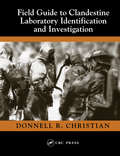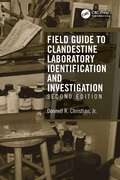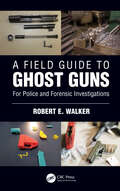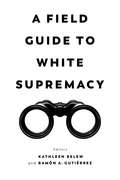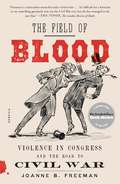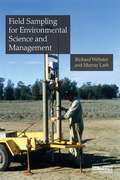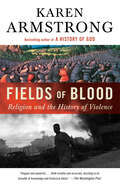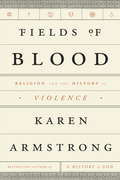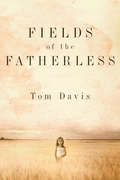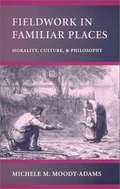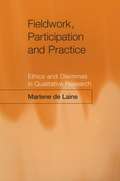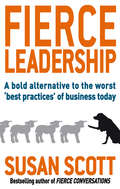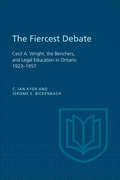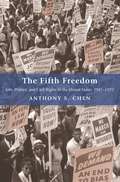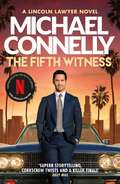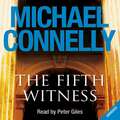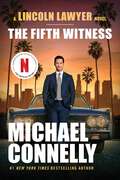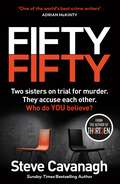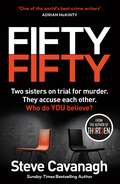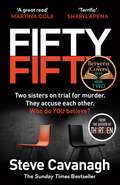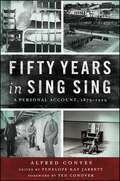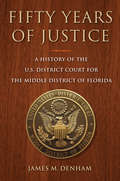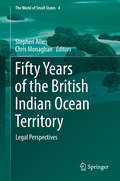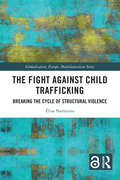- Table View
- List View
Field Guide to Clandestine Laboratory Identification and Investigation
by Jr., Donnell ChristianThis book provides information for field use along with reproducible worksheets for crime scene investigators. It presents a list of the chemicals commonly encountered in clandestine laboratories and includes information about chemical hazards and the personal protective equipment required.
Field Guide to Clandestine Laboratory Identification and Investigation
by Donnell R. Christian, Jr.Clandestine labs that manufacture drugs or explosives may be encountered virtually anywhere. They can range from complex operations employing scientific equipment and exotic chemicals or simply kitchen utensils and chemicals purchased at a local grocery or hardware store. Regardless of their form, the key to detecting clandestine labs is the ability to recognize the combinations of equipment and chemicals that constitute the lab in the first place. Te first line of defense against the manufacturers—who supply the drug trade and terrorists with their tools of destruction—is law enforcement, the fire services, and other emergency responders. Field Guide to Clandestine Laboratory Identification and Investigation, Second Edition provides the information necessary to recognize operations that produce these deadly brews. As with the prior edition, the book has sections covering the chemicals and equipment commonly used in the manufacture of drugs and explosives. They are grouped in a manner that allows the emergency responder to quickly identify common combinations of equipment and chemicals that could potentially be used to manufacture drugs or explosives. Since many clandestine manufacturing operations use commonly available materials that have legitimate uses, the author outlines how to quickly assess and recognize key indicators associated with clandestine laboratory operations. Sections within the book address information concerning both the hazards associated with those chemicals involved and the personal protective equipment needed to abate the hazards. In addition, documentation requirements, field-testing, and sampling procedures are detailed for use once the operation has been seized and secured. Reproducible worksheets are provided to be used either as, or to supplement, the on-scene investigators’ field notes and assist in providing a standardized manner to objectively record information about the crime scene. The ability to identify the tools used to manufacture contraband drugs and explosives is a key element in the battle against drug abuse and terrorism, making the Field Guide to Clandestine Laboratory Identification and Investigation, Second Edition an indispensible resource for responders and investigators alike.
A Field Guide to Ghost Guns: For Police and Forensic Investigations
by Robert E. WalkerWhile it has always been legal for a citizen in the United States to manufacture their own firearm, the sale and distribution of such items is illegal under current U.S. law. The primary impediment to individuals making their own weapons has been access to the tooling and machinery required to convert raw materials into finished parts for assembly. However, in the last fifteen years this paradigm has changed drastically. Home builders and companies have emerged to support individuals who choose to produce their own firearm. Kits with receivers and gun components are available for hobbyists, as are 3-D printable gun designs, downloadable from the Internet in some cases. This phenomenon has led to the term ghost guns: firearms whose existence is not reported to any third party and therefore whose existence is unknown and, largely, untraceable. A Field Guide to Ghost Guns: For Police and Forensic Investigators provides a useful brief for field investigators on the technical aspects of the self-made firearm, so-called "ghost guns. The first book to focus on the emergent issue of ghost guns, coverage addresses the history of firearms making and manufacture in the U.S.—including regulated and nonregulated manufacturing, details firearm components and accessories, how to assemble a Firearm, an overview of common Types of ghost guns, and investigative considerations. Though there have been increased calls to regulate guns in the wake of numerous mass shootings, the proliferation of ghost guns—and their increasing use in crimes—would likely require additional laws and regulatory measures. Since there are few knowledgeable firearm practitioners in the field, who can render qualified opinions on the subject, author Robb Walker has taken a practical, pragmatic approach to the topic. The book defines terminology, provides photographs, and explains the concepts surrounding homemade firearm in clear, easy to understand terms. Key Features: Addresses the technology and technical aspects in creating, assembling, and/or modifying homemade firearms—both printable and assembled from pre-fabricated components Discusses the rationale and motivations behind making one’s own firearm Outlines what is currently legal and illegal under U.S. law, providing indicators for investigators for illegally configured firearms A Field Guide to Ghost Guns addresses the pressing need for a practical reference on the topic. The book provides police investigators and forensic ballistics experts a useful aid to understand legal aspects and to identify ghost guns, and the paraphernalia—tooling and machinery, and otherwise—indicative of gun making in a non-formal, factory setting.
A Field Guide to White Supremacy
by Kathleen Belew and Ramón A. GutiérrezDrawing explicit lines, across time and a broad spectrum of violent acts, to provide the definitive field guide for understanding and opposing white supremacy in America Hate, racial violence, exclusion, and racist laws receive breathless media coverage, but such attention focuses on distinct events that gain our attention for twenty-four hours. The events are presented as episodic one-offs, unfortunate but uncanny exceptions perpetrated by lone wolves, extremists, or individuals suffering from mental illness—and then the news cycle moves on. If we turn to scholars and historians for background and answers, we often find their knowledge siloed in distinct academic subfields, rarely connecting current events with legal histories, nativist insurgencies, or centuries of misogynist, anti-Black, anti-Latino, anti-Asian, and xenophobic violence. But recent hateful actions are deeply connected to the past—joined not only by common perpetrators, but by the vast complex of systems, histories, ideologies, and personal beliefs that comprise white supremacy in the United States. Gathering together a cohort of researchers and writers, A Field Guide to White Supremacy provides much-needed connections between violence present and past. This book illuminates the career of white supremacist and patriarchal violence in the United States, ranging across time and impacted groups in order to provide a working volume for those who wish to recognize, understand, name, and oppose that violence. The Field Guide is meant as an urgent resource for journalists, activists, policymakers, and citizens, illuminating common threads in white supremacist actions at every scale, from hate crimes and mass attacks to policy and law. Covering immigration, antisemitism, gendered violence, lynching, and organized domestic terrorism, the authors reveal white supremacy as a motivating force in manifold parts of American life. The book also offers a sampling of some of the most recent scholarship in this area in order to spark broader conversations between journalists and their readers, teachers and their students, and activists and their communities. A Field Guide to White Supremacy will be an indispensable resource in paving the way for politics of alliance in resistance and renewal.
The Field of Blood: Violence in Congress and the Road to Civil War
by Joanne B. FreemanIn The Field of Blood, Joanne B. Freeman recovers the long-lost story of physical violence on the floor of the U.S. Congress. Drawing on an extraordinary range of sources, she shows that the Capitol was rife with conflict in the decades before the Civil War. <p><p> Legislative sessions were often punctuated by mortal threats, canings, flipped desks, and all-out slugfests. When debate broke down, congressmen drew pistols and waved Bowie knives. One representative even killed another in a duel. Many were beaten and bullied in an attempt to intimidate them into compliance, particularly on the issue of slavery. <p> These fights didn’t happen in a vacuum. Freeman’s dramatic accounts of brawls and thrashings tell a larger story of how fisticuffs and journalism, and the powerful emotions they elicited, raised tensions between North and South and led toward war. In the process, she brings the antebellum Congress to life, revealing its rough realities—the feel, sense, and sound of it—as well as its nation-shaping import. <p> Funny, tragic, and rivetingly told, The Field of Blood offers a front-row view of congressional mayhem and sheds new light on the careers of John Quincy Adams, Henry Clay, and other luminaries, as well as introducing a host of lesser-known but no less fascinating men. The result is a fresh understanding of the workings of American democracy and the bonds of Union on the eve of their greatest peril.
Field Sampling for Environmental Science and Management
by Richard Webster Murray LarkScientists and consultants need to estimate and map properties of the terrestrial environment. These include plant nutrients and parasites in soil, gaseous emissions from soil, pollutant metals and xenobiotics in waste and contaminated land, salt in groundwater and species abundances above ground. The scale varies from small experimental plots to catchments, and the land may be enclosed in fields or be open grassland, forest or desert. Those who sample the variables to obtain the necessary data need guidance on the design and analysis of sampling methods for their conclusions and recommendations to be valid. This book provides that guidance, backed by sound rationale and statistical theory. It concentrates on design-based sampling for estimates of mean values of environmental properties, emphasizing replication and randomization. It starts with simple random sampling and then progresses to more efficient designs, such as spatially stratified random sampling, stratification by classes and cluster sampling. It includes a section on purposive sampling in classical soil survey, which is relevant to other environmental properties such as vegetation. It also describes the effects of bulking on errors and the use of ancillary information and regression to improve estimates. The authors draw the important distinction between design-based sampling for estimating means and model-based methods (geostatistics) for local spatial prediction and mapping, and focus on the latter. They describe designs suitable for computing variograms and prediction by kriging, as well as a staged approach, so that sampling is neither inadequate nor excessive, and designs adapt as knowledge is accumulated. Including numerous worked case studies of sampling in agriculture, ecology and environmental science, the book will be of immediate practical value.
Fields of Blood: Religion and the History of Violence
by Karen ArmstrongFrom the renowned and best-selling author of A History of God, a sweeping exploration of religion and the history of human violence. For the first time, religious self-identification is on the decline in American. Some analysts have cited as cause a post-9/11perception: that faith in general is a source of aggression, intolerance, and divisiveness--something bad for society. But how accurate is that view? With deep learning and sympathetic understanding, Karen Armstrong sets out to discover the truth about religion and violence in each of the world's great traditions, taking us on an astonishing journey from prehistoric times to the present. While many historians have looked at violence in connection with particular religious manifestations (jihad in Islam or Christianity's Crusades), Armstrong looks at each faith--not only Christianity and Islam, but also Buddhism, Hinduism, Confucianism, Daoism, and Judaism--in its totality over time. As she describes, each arose in an agrarian society with plenty powerful landowners brutalizing peasants while also warring among themselves over land, then the only real source of wealth. In this world, religion was not the discrete and personal matter it would become for us but rather something that permeated all aspects of society. And so it was that agrarian aggression, and the warrior ethos it begot, became bound up with observances of the sacred. In each tradition, however, a counterbalance to the warrior code also developed. Around sages, prophets, and mystics there grew up communities protesting the injustice and bloodshed endemic to agrarian society, the violence to which religion had become heir. And so by the time the great confessional faiths came of age, all understood themselves as ultimately devoted to peace, equality, and reconciliation, whatever the acts of violence perpetrated in their name.Industrialization and modernity have ushered in an epoch of spectacular and unexampled violence, although, as Armstrong explains, relatively little of it can be ascribed directly to religion. Nevertheless, she shows us how and in what measure religions, in their relative maturity, came to absorb modern belligerence--and what hope there might be for peace among believers of different creeds in our time.At a moment of rising geopolitical chaos, the imperative of mutual understanding between nations and faith communities has never been more urgent, the dangers of action based on misunderstanding never greater. Informed by Armstrong's sweeping erudition and personal commitment to the promotion of compassion, Fields of Blood makes vividly clear that religion is not the problem.From the Hardcover edition.
Fields of Blood
by Karen ArmstrongFrom the renowned and bestselling author of A History of God, a sweeping exploration of religion's connection to violence. For the first time in American history, religious self-identification is on the decline. Some have cited a perception that began to grow after September 11: that faith in general is a source of aggression, intolerance and divisiveness--something bad for society. But how accurate is that view? And does it apply equally to all faiths? In these troubled times, we risk basing decisions of real and dangerous consequence on mistaken understandings of the faiths subscribed around us, in our immediate community as well as globally. And so, with her deep learning and sympathetic understanding, Karen Armstrong examines the impulse toward violence in each of the world's great religions. The comparative approach is new: while there have been plenty of books on jihad or the Crusades, this book lays the Christian and the Islamic way of war side by side, along with those of Buddhism, Hinduism, Confucianism, Daoism and Judaism. Each of these faiths arose in agrarian societies with plenty of motivation for violence: landowners had to lord it over peasants and warfare was essential to increase one's landholdings, the only real source of wealth before the great age of trade and commerce. In each context, it fell to the priestly class to legitimize the actions of the state. And so the martial ethos became bound up with the sacred. At the same time, however, their ideologies developed that ran counter to the warrior code: around sages, prophets and mystics. Within each tradition there grew up communities that represented a protest against the injustice and violence endemic to agrarian society. This book explores the symbiosis of these 2 impulses and its development as these confessional faiths came of age. The aggression of secularism has often damaged religion and pushed it into a violent mode. But modernity has also been spectacularly violent, and so Armstrong goes on to show how and in what measure religions, in their relative maturity, came to absorb modern belligerence--and what hope there might be for peace among believers in our time.
Fields of the Fatherless
by Tom DavisIn Bible times, God maintained a special provision for the less fortunate. As His people harvested their fields, they were instructed to always leave a portion of the crops for those in need. Today, God's heart continues to beat for the poor, the widows, and the fatherless. And as His children, our divine commission remains the same, a directive that's nothing less than the heart of the Christian message.Author Tom Davis encourages us to move beyond words and become Christ to those in need. Join Tom as he shares a journey from around the world and our own backyard as people's lives are changed through the power of compassion. Filled with remarkable stories of hope and mercy, Fields of the Fatherless will inspire you to love "the least of these," and discover the joy found in becoming the hands and feet of Christ, His way.
Fieldwork In Familiar Places: Morality, Culture, And Philosophy
by Michele M. Moody-AdamsThe persistence of deep moral disagreements--across cultures as well as within them--has created widespread skepticism about the objectivity of morality. Moral relativism, moral pessimism, and the denigration of ethics in comparison with science are the results. Fieldwork in Familiar Places challenges the misconceptions about morality, culture, and objectivity that support these skepticisms, to show that we can take moral disagreement seriously and yet retain our aspirations for moral objectivity. Michele Moody-Adams critically scrutinizes the anthropological evidence commonly used to support moral relativism. Drawing on extensive knowledge of the relevant anthropological literature, she dismantles the mystical conceptions of "culture" that underwrite relativism. She demonstrates that cultures are not hermetically sealed from each other, but are rather the product of eclectic mixtures and borrowings rich with contradictions and possibilities for change. The internal complexity of cultures is not only crucial for cultural survival, but will always thwart relativist efforts to confine moral judgments to a single culture. Fieldwork in Familiar Places will forever change the way we think about relativism: anthropologists, psychologists, historians, and philosophers alike will be forced to reconsider many of their theoretical presuppositions. Moody-Adams also challenges the notion that ethics is methodologically deficient because it does not meet standards set by natural science. She contends that ethics is an interpretive enterprise, not a failed naturalistic one: genuine ethical inquiry, including philosophical ethics, is a species of interpretive ethnography. We have reason for moral optimism, Moody-Adams argues. Even the most serious moral disagreements take place against a background of moral agreement, and thus genuine ethical inquiry will be fieldwork in familiar places. Philosophers can contribute to this enterprise, she believes, if they return to a Socratic conception of themselves as members of a rich and complex community of moral inquirers.
Fieldwork, Participation and Practice: Ethics and Dilemmas in Qualitative Research
by Marlene De Laine'I would highly recommend Fieldwork, Participation and Practice: Ethics and Dilemmas in Qualitative Research as a text for the wide range of fields that currently engage in fieldwork. She does an excellent job of moving beyond basic ethical principles and informs the reader of the complexity of contemporary fieldwork' - Forum for Qualitative Social Research - follow the link below to read the complete review This timely and topical look at the role of ethics in fieldwork takes into account some of the major issues confronting qualitative researchers. The main purposes of this book are twofold: to promote an understanding of the harmful possibilities of fieldwork; and to provide ways of dealing with ethical problems and dilemmas. To these ends, examples of actual fieldwork are provided that address ethical problems and dilemmas, and posit ways of dealing with them.
Fierce Leadership: A bold alternative to the worst 'best practices' of business today
by Susan ScottHire smart people...', 'Hold people accountable...', 'Focus on the client...'. For years, these mantras have been blindly adopted by business leaders everywhere but, as Susan Scott shows, these so-called best practices are ineffectual, cost companies vast sums and drive away the most valuable employees and customers. Yet they are so deeply ingrained in our organisational culture that no one has questioned them, until now.Informed by over a decade of research and work with CEOs and senior executives of the world's leading companies, Susan Scott reveals why these established practices are so wrongheaded and shows you how to spot the signs that you are falling prey to them and why they are adversely affecting your business. She then, in her direct, no-nonsense style, suggests a series of surprising and smart alternatives that you should put in their place.
The Fiercest Debate: Cecil A Wright, the Benchers, and Legal Education in Ontario 1923-1957
by C. Kyer Jerome BickenbachFrom its earliest days the Law Society of Upper Canada adhered to the traditions of English legal practice and education. In the 1930s and 1940s, however, some of the most cherished of those traditions were challenged in a bitter debate about the nature of legal education in Ontario. This book tells the story of that debate and one of its leading participants, Cecil Augustus Wright. 'Caesar' Wright was one of the first Canadian legal academics to attend Harvard Law School, and his Harvard background played a significant role in the development of his position in the controversy over legal education. The established lawyers who served as benchers of the law society insisted that legal training should be principally a matter of practical experience. Wright, who sought to bring American notions of the roles of lawyers and legal academic to Ontario, tried unsuccessfully to persuade the benchers that the job of educating young lawyers should be transferred to the universities. Decades of contention culminated in 1949 with Wright's dramatic resignation from Osgoode Hall Law School and his appointment as dean of the newly created Faculty of Law at the University of Toronto. The debate between the benchers of the law society and the proponents of academic legal education touched the lives of many prominent lawyers and law professors, and its resolution permanently changed the nature of legal education in Ontario. Ian Kyer and Jerome Bickenbach offer an account of the conflict and a portrait of the energetic and often acerbic figure who has been called Canada's most influential law teacher.
The Fifth Freedom: Jobs, Politics, and Civil Rights in the United States, 1941-1972 (Princeton Studies in American Politics: Historical, International, and Comparative Perspectives #106)
by Anthony S. ChenWhere did affirmative action in employment come from? The conventional wisdom is that it was instituted during the Johnson and Nixon years through the backroom machinations of federal bureaucrats and judges. The Fifth Freedom presents a new perspective, tracing the roots of the policy to partisan conflicts over fair employment practices (FEP) legislation from the 1940s to the 1970s. Drawing on untapped sources, Anthony Chen chronicles the ironic, forgotten role played by American conservatives in the development of affirmative action. Decades before affirmative action began making headlines, millions of Americans across the country debated whether government could and should regulate job discrimination. On one side was an interfaith and interracial bloc of liberals, who demanded FEP legislation that would establish a centralized system for enforcing equal treatment in the labor market. On the other side was a bloc of business-friendly, small-government conservatives, who felt that it was unwise to "legislate tolerance" and who made common cause with the conservative wing of the Republican party. Conservatives ultimately prevailed, but their obstruction of FEP legislation unintentionally facilitated the rise of affirmative action, a policy their ideological heirs would find even more abhorrent. Broadly interdisciplinary, The Fifth Freedom sheds new light on the role of parties, elites, and institutions in the policymaking process; the impact of racial politics on electoral realignment; the history of civil rights; the decline of New Deal liberalism; and the rise of the New Right.Some images inside the book are unavailable due to digital copyright restrictions.
The Fifth Witness (A\lincoln Lawyer Novel Ser. #4)
by Michael ConnellyA blistering courtroom drama featuring THE LINCOLN LAWYER’s Mickey Haller from the master of the genre. In tough times, crime is one of the few things that still pays, but if defense attorney Mickey Haller was expecting an uptick in business during the economic downturn, the reality is a different story. Even people needing legal representation to keep them out of jail are having to make cut-backs, it seems. In fact, the most significant part of Mickey’s business right now is not about keeping clients out of jail but about keeping a roof over their heads, as the foreclosure boom hits thousands of people who were granted unrealistic mortgages in the good times and now face being kicked to the curb by ruthless corporations. Lisa Trammel had been a client of Mickey’s for eight months – his very first foreclosure case, in fact – and although so far he’d managed to stop the bank from taking her house, the strain and sense of injustice are beginning to take their toll, and the bank had recently got a restraining order to prevent her protesting against their fraudulent practices. But now the bank’s CEO, Mitchell Bondurant, has been found in the bank’s car park with a bullet in his brain, and Lisa is about to be indicted for murder. For Mickey, it’s back to what he does best on the biggest stage of all, but if he thought defending Lisa Trammel was going to be a walk in the park, he’d be wrong. Not only is he about to learn some startling truths about his client, but also about himself, and by the time the verdict is in, Mickey’s whole world will have been turned upside down.
The Fifth Witness (Mickey Haller Series #4)
by Michael ConnellyIn tough times, crime is one of the few things that still pays, but even criminals are having to make cut-backs. So for defence lawyer Mickey Haller, most of his new business is not about keeping people out of jail; it's about keeping a roof over their heads as the foreclosure business is booming.Lisa Trammel has been a client of Mickey's for eight months, and so far he's stopped the bank from taking her house. But now the bank's CEO has been found beaten to death - and Lisa is about to be indicted for murder...Read by Peter Giles(p) 2011 Hachette Audio
The Fifth Witness (A Lincoln Lawyer Novel #4)
by Michael ConnellyIn this #1 New York Times bestselling thriller, after taking on a foreclosure case, defense attorney Mickey Haller fights to prove his client&’s innocence—but first he must follow a trail of black market evidence to its sinister end. Mickey Haller has fallen on tough times. He expands his business into foreclosure defense, only to see one of his clients accused of killing the banker she blames for trying to take away her home. Mickey puts his team into high gear to exonerate Lisa Trammel, even though the evidence and his own suspicions tell him his client is guilty. Soon after he learns that the victim had black market dealings of his own, Haller is assaulted, too -- and he's certain he's on the right trail. Despite the danger and uncertainty, Haller mounts the best defense of his career in a trial where the last surprise comes after the verdict is in. Connelly proves again why he "may very well be the best novelist working in the United States today" (San Francisco Chronicle).
Fifty-Fifty: The Number One Ebook Bestseller, Sunday Times Bestseller, BBC2 Between the Covers Book of the Week and Richard and Judy Bookclub pick (Eddie Flynn Series)
by Steve CavanaghPART OF BBC TWO'S BOOK CLUB BETWEEN THE COVERSTWO SISTERS ON TRIAL FOR MURDER. THEY ACCUSE EACH OTHER.WHO DO YOU BELIEVE?'911 what's your emergency?''My dad's dead. My sister Sofia killed him. She's still in the house. Please send help.''My dad's dead. My sister Alexandra killed him. She's still in the house. Please send help.'One of them is a liar and a killer.But which one?********Your favourite authors LOVE Fifty-Fifty, the follow-up to the bestselling novel Thirteen:'A terrific writer. He has talent to burn.' Don Winslow'Trust me - it will keep you guessing until the very end.' Ian Rankin'Unpredictable, daring and completely compelling. Top notch writing.' Alex North'Very clever, darkly funny, moving, fast-paced.' Jane Casey'Steve Cavanagh writes the best hooks in the business' Mick Herron'Absolutely brilliant. Addictive, clever, pacy. Eddie Flynn is one of my heroes.' Jo Spain'Intelligent, sophisticated and tense.' Mari Hannah
Fifty-Fifty: The Number One Ebook Bestseller, Sunday Times Bestseller, BBC2 Between the Covers Book of the Week and Richard and Judy Bookclub pick (Eddie Flynn Series)
by Steve CavanaghPART OF BBC TWO'S BOOK CLUB BETWEEN THE COVERSTWO SISTERS ON TRIAL FOR MURDER. THEY ACCUSE EACH OTHER.WHO DO YOU BELIEVE?'911 what's your emergency?''My dad's dead. My sister Sofia killed him. She's still in the house. Please send help.''My dad's dead. My sister Alexandra killed him. She's still in the house. Please send help.'One of them is a liar and a killer.But which one?********Your favourite authors LOVE Fifty-Fifty, the follow-up to the bestselling novel Thirteen:'A terrific writer. He has talent to burn.' Don Winslow'Trust me - it will keep you guessing until the very end.' Ian Rankin'Unpredictable, daring and completely compelling. Top notch writing.' Alex North'Very clever, darkly funny, moving, fast-paced.' Jane Casey'Steve Cavanagh writes the best hooks in the business' Mick Herron'Absolutely brilliant. Addictive, clever, pacy. Eddie Flynn is one of my heroes.' Jo Spain'Intelligent, sophisticated and tense.' Mari Hannah
Fifty-Fifty: The Number One Ebook Bestseller, Sunday Times Bestseller, BBC2 Between the Covers Book of the Week and Richard and Judy Bookclub pick
by Steve CavanaghPART OF BBC TWO'S BOOK CLUB BETWEEN THE COVERSTWO SISTERS ON TRIAL FOR MURDER. THEY ACCUSE EACH OTHER.WHO DO YOU BELIEVE?'911 what's your emergency?''My dad's dead. My sister Sofia killed him. She's still in the house. Please send help.''My dad's dead. My sister Alexandra killed him. She's still in the house. Please send help.'One of them is a liar and a killer.But which one?********Your favourite authors LOVE Fifty-Fifty, the follow-up to the bestselling novel Thirteen:'A terrific writer. He has talent to burn.' Don Winslow'Trust me - it will keep you guessing until the very end.' Ian Rankin'Unpredictable, daring and completely compelling. Top notch writing.' Alex North'Very clever, darkly funny, moving, fast-paced.' Jane Casey'Steve Cavanagh writes the best hooks in the business' Mick Herron'Absolutely brilliant. Addictive, clever, pacy. Eddie Flynn is one of my heroes.' Jo Spain'Intelligent, sophisticated and tense.' Mari Hannah
Fifty-Fifty: The Number One Ebook Bestseller, Sunday Times Bestseller, BBC2 Between the Covers Book of the Week and Richard and Judy Bookclub pick (Eddie Flynn Series)
by Steve CavanaghPART OF BBC TWO'S BOOK CLUB BETWEEN THE COVERSTWO SISTERS ON TRIAL FOR MURDER. THEY ACCUSE EACH OTHER.WHO DO YOU BELIEVE?'911 what's your emergency?''My dad's dead. My sister Sofia killed him. She's still in the house. Please send help.''My dad's dead. My sister Alexandra killed him. She's still in the house. Please send help.'One of them is a liar and a killer.But which one?********Your favourite authors LOVE Fifty-Fifty, the follow-up to the bestselling novel Thirteen:'A terrific writer. He has talent to burn.' Don Winslow'Trust me - it will keep you guessing until the very end.' Ian Rankin'Unpredictable, daring and completely compelling. Top notch writing.' Alex North'Very clever, darkly funny, moving, fast-paced.' Jane Casey'Steve Cavanagh writes the best hooks in the business' Mick Herron'Absolutely brilliant. Addictive, clever, pacy. Eddie Flynn is one of my heroes.' Jo Spain'Intelligent, sophisticated and tense.' Mari Hannah
Fifty Years in Sing Sing: A Personal Account, 1879-1929 (Excelsior Editions)
by Alfred ConyesWritten more than eighty years ago, Fifty Years in Sing Sing is the personal account of Alfred Conyes (1852–1931), who worked as a prison guard and then keeper at Sing Sing Prison in Ossining, New York, from 1879 to 1929. This unpublished memoir, dated 1930, was found among his granddaughter's estate by his great-granddaughter Penelope Kay Jarrett. Near the end of his life, Conyes told his story to family member Alfred Van Buren Jr., relating, in detail, harrowing and humorous accounts of what prison life was like from his perspective and how prison conditions changed over the course of a half century. The book covers prison hardship, cruel punishments deemed appropriate at the time, daring and clever escapes, the advent of death by electricity, Prohibition, doughboys, and prison reform.
Fifty Years of Justice: A History of the U.S. District Court for the Middle District of Florida
by James M. DenhamThe verdicts have made headlines, but little is known about the inner workings of the court in which they were delivered. In Fifty Years of Justice, James Denham presents the fascinating history of the U.S. Middle District Court of Florida from its founding in 1962 to the present. Readers will discover the intricacies of rulings, the criminal defendants and civil litigants, and the dedicated officials—the unsung heroes—who keep the justice system running day to day. From desegregation to discrimination, espionage to the environment, trafficking to terrorism, and a host of cases in between, litigation in these courtrooms has shaped and shaken both state and nation.
Fifty Years of the British Indian Ocean Territory: Legal Perspectives (The World of Small States #4)
by Chris Monaghan Stephen AllenThis book offers a detailed account of the legal issues concerning the British Indian Ocean Territory (Chagos Islands) by leading experts in the field. It examines the broader significance of the ongoing Bancoult litigation in the UK Courts, the Chagos Islanders' petition to the European Court of Human Rights and Mauritius' successful challenge, under the UN Convention of the Law of the Sea, to the UK government's creation of a Marine Protected Area around the Chagos Archipelago. This book, produced in response to the 50th anniversary of the BIOT's founding, also assesses the impact of the decisions taken in respect of the Territory against a wider background of decolonization while addressing important questions about the lawfulness of maintaining Overseas Territories in the post-colonial era.The chapter ‘Anachronistic As Colonial Remnants May Be...’ - Locating the Rights of the Chagos Islanders As A Case Study of the Operation of Human Rights Law in Colonial Territories is open access under a CC BY 4.0 license via link.springer.com.
The Fight Against Child Trafficking: Breaking the Cycle of Structural Violence (Globalisation, Europe, and Multilateralism)
by Élisa NarminioThis book analyses the contemporary effects of anti-trafficking policies on children trafficked for labour. It explores different dimensions of private and public apparatuses through which the governmentality of child trafficking manifests itself at a regional and interregional level. It investigates questions linked to the diffusion of the child trafficking norm between and within regions and stakeholders; to the criminalisation and vulnerabilisation of child traffickees; and to private governance of anti-trafficking initiatives, in particular concerning social sustainability of business supply chains. Drawing on extensive fieldwork with government, police, justice, civil society, multilateral organizations and businesses in the EU and in the ASEAN, the book argues that child traffickees are subjected not only to physical and psychological violence, but also to structural violence. The book concludes with suggestions to improve current anti-trafficking regimes. This book will be of key interest to scholars, students and practitioners in EU Studies, Southeast Asian Studies, Regionalism, Human Rights, Law, International Relations, and International Political Economy.
